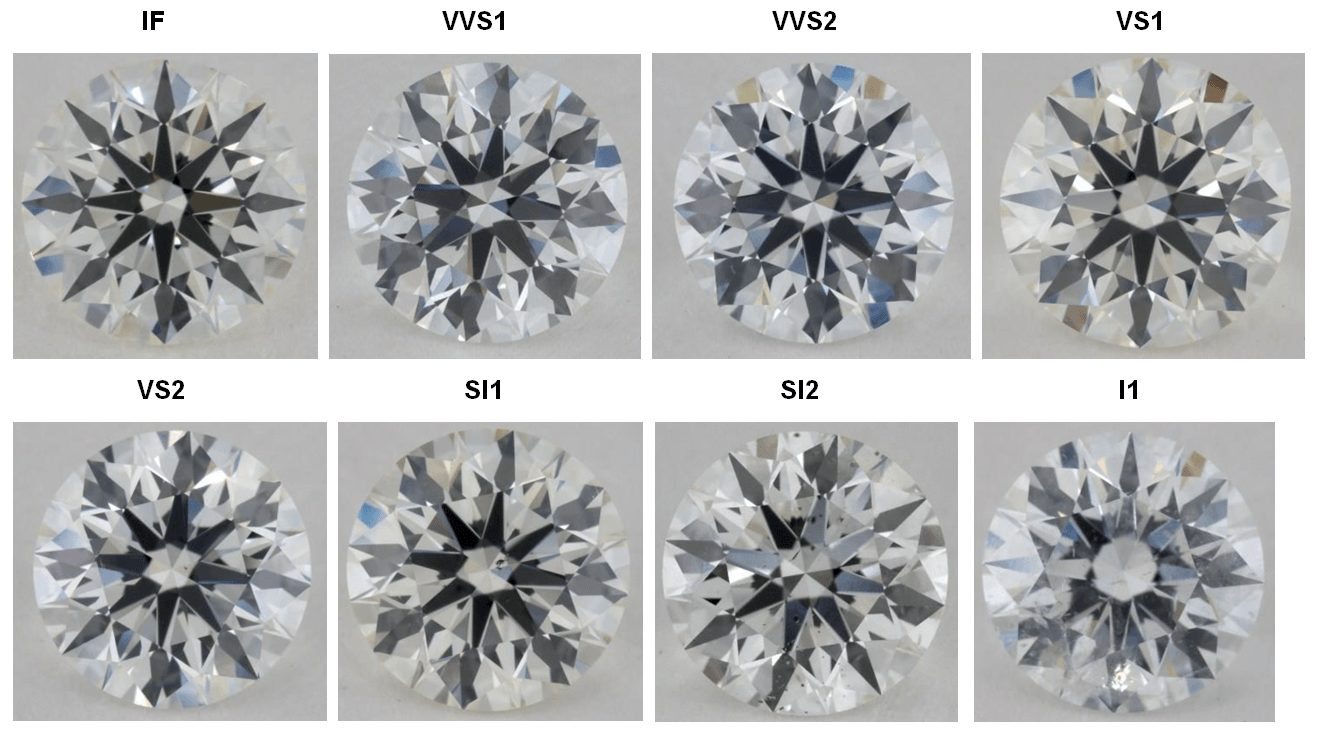Diamond clarity refers to a qualitative metric often used in grading the visual appearance of every precious stone. The fewer blemishes and inclusions the gemstone has, the better its grade.
Clarity is considered one of the most essential 4C’s due to its ability to impact the value of a diamond. Typically, it’s almost impossible to recognize any existing imperfections using the unaided or naked eye.
Often, the first thing that someone will notice when looking at a diamond is its color and clarity.
Diamond Clarity Chart and Grades
Considering that diamonds are formed deep inside the earth under extreme pressure and heat, all gemstones contain inclusions (small imperfections inside) or blemishes (on the surface). The diamond clarity chart is used to determine the extent to which they are present.
Those that have extensive blemishes or inclusions have reduced brilliance as the flaws present interferes with the passage of light through the stone. Traditionally, how you view a diamond is affected by the position of the flaw.
The diamond clarity scale invented by the GIA is used to grade all diamonds. When it comes to grading diamonds, the GIA considers the positioning of the flaws, number, reflectivity, color, and size. All flaws are checked using a 10x magnification.
Professional diamond traders use the following grades:
Obvious Inclusions:
- I1—Included 1
- I2—Included 2
- I3—Included 3
No Inclusions:
- F—Flawless
- IF—Internally Flawless
Noticeable Inclusions
- SI1—Slightly Included 1
- SI2—Slightly Included 2
Minor Inclusions
- VS1—Very slightly included 1
- VS2—Very slightly included 2
Minute Inclusions
- VVS1—Very, very slightly included 1
- VVS2—Very, very slightly included 2
Determining Clarity Grades
When attempting to determine clarity grades, experts traditionally used a microscope with a 10x magnification combined with eye visibility. According to Pricescope, numerous factors are considered when determining the best diamond clarity.
It’s worth noting that Pricescope is a renowned platform for all diamond matters and whose opinion can be relied upon when looking to determine clarity. The factors relied on when establishing clarity include:
- Size: It’s an important consideration as the larger the inclusion, the more impact it will have on its clarity.
- Relief: It refers to whether the inclusion is highly noticeable compared to the actual diamond.
- Nature: This is with regards to whether the flaw is an inclusion or a blemish. It seeks to determine whether it’s inside or outside the diamond.
- Location: As the name suggests, it seeks to check where a flaw is situated. Whether close to the center of the table or in another location.
- Number: The clarity grade is lowered when a diamond has varying clarity characteristics.
Conclusion
So which diamond clarity is deemed the best of all? There is no simple answer to this question as it depends on what one is looking for. In most cases, people assume that the internally flawless or flawless diamond is the best, as opposed to choosing one that has inclusions. However, this doesn’t always apply, as a diamond having such a grade is not only beautiful but also rare. This means that it’s expensive and not within many people’s financial reach.

